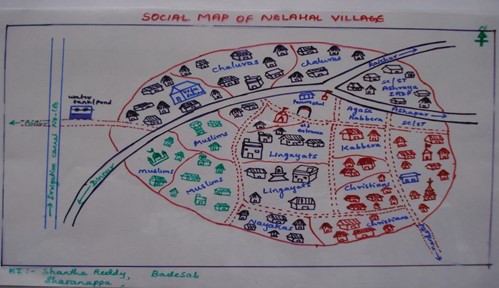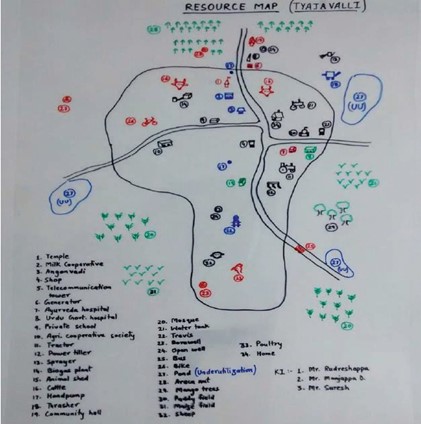For participatory research, you can use several methods to collect data. For example, a resource map, made with the community, looks like this:
Below, you will find a short description of the methods that are used most. We advise you to use multiple methods to collect data, to prevent bias. Click on the method to learn more.
You plan your research with the community through:
involves the sketching of houses and other social facilities and infrastructure in a village. It helps to visualise and situate the location of household, social facilities and infrastructure in the village.

This is a tool that helps us to learn about the community and its resource base, mostly based on the perception of the natural resources found in their community.

This helps villagers to set priorities (problem, needs, action etc). This is usually done with key informants.
Here the villagers meet in small groups and discuss the most important events in the community in the past and put in to a timeline. This process reflects discussions on problems, social and technological innovations or on the community’s history of cooperation to solve problems in the past.
This method determines patterns and trends throughout the year in a certain village. It can be used to know about rainfall, food availability, agriculture production, income and expenditure, health problems etc. This tool helps to understand how villagers allocate their time to various activities during a year.
We will walk you through the first three methods in the next steps. Download this overview with all of the data collecting tools and links to more information and step-by-step guides.